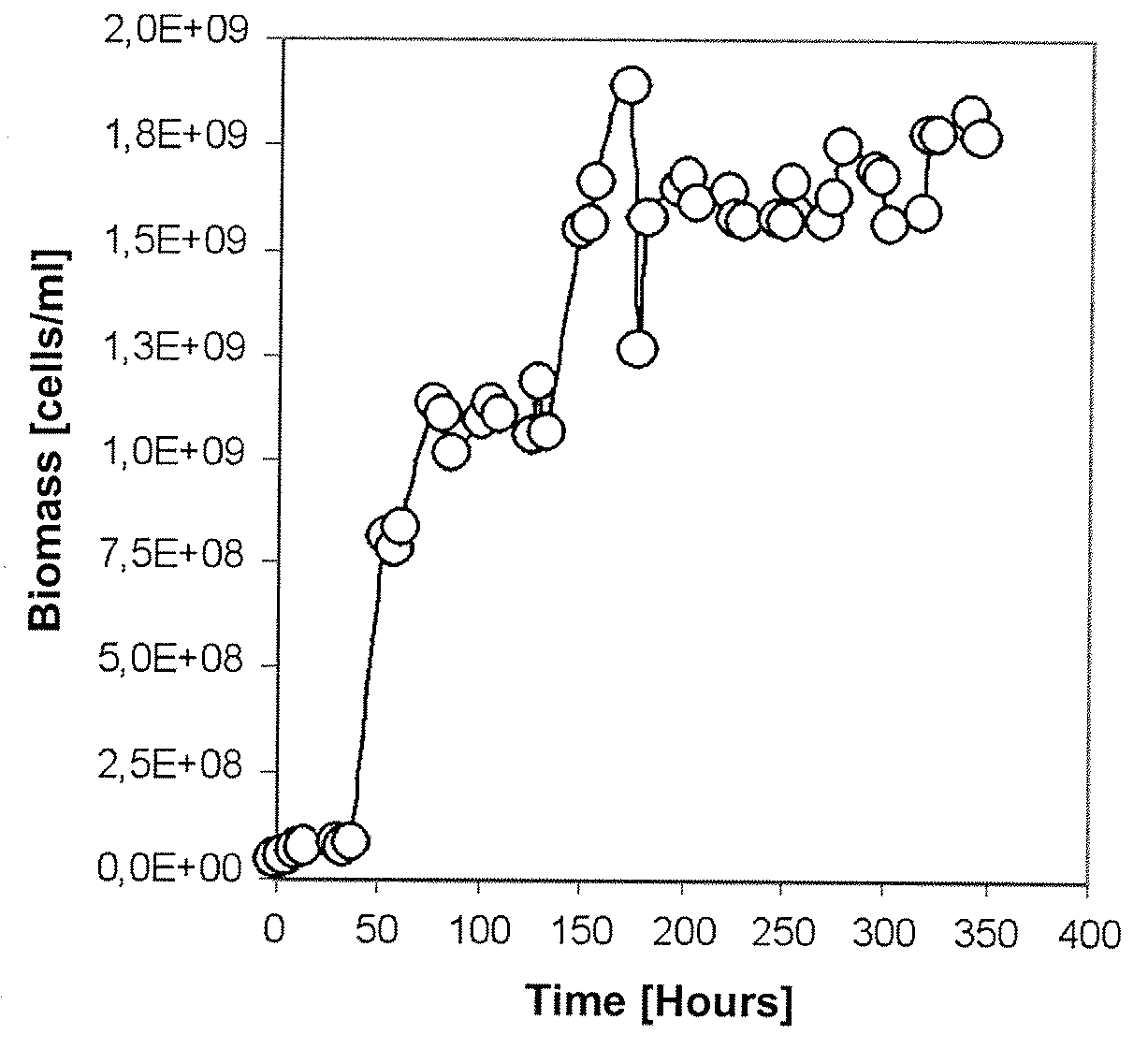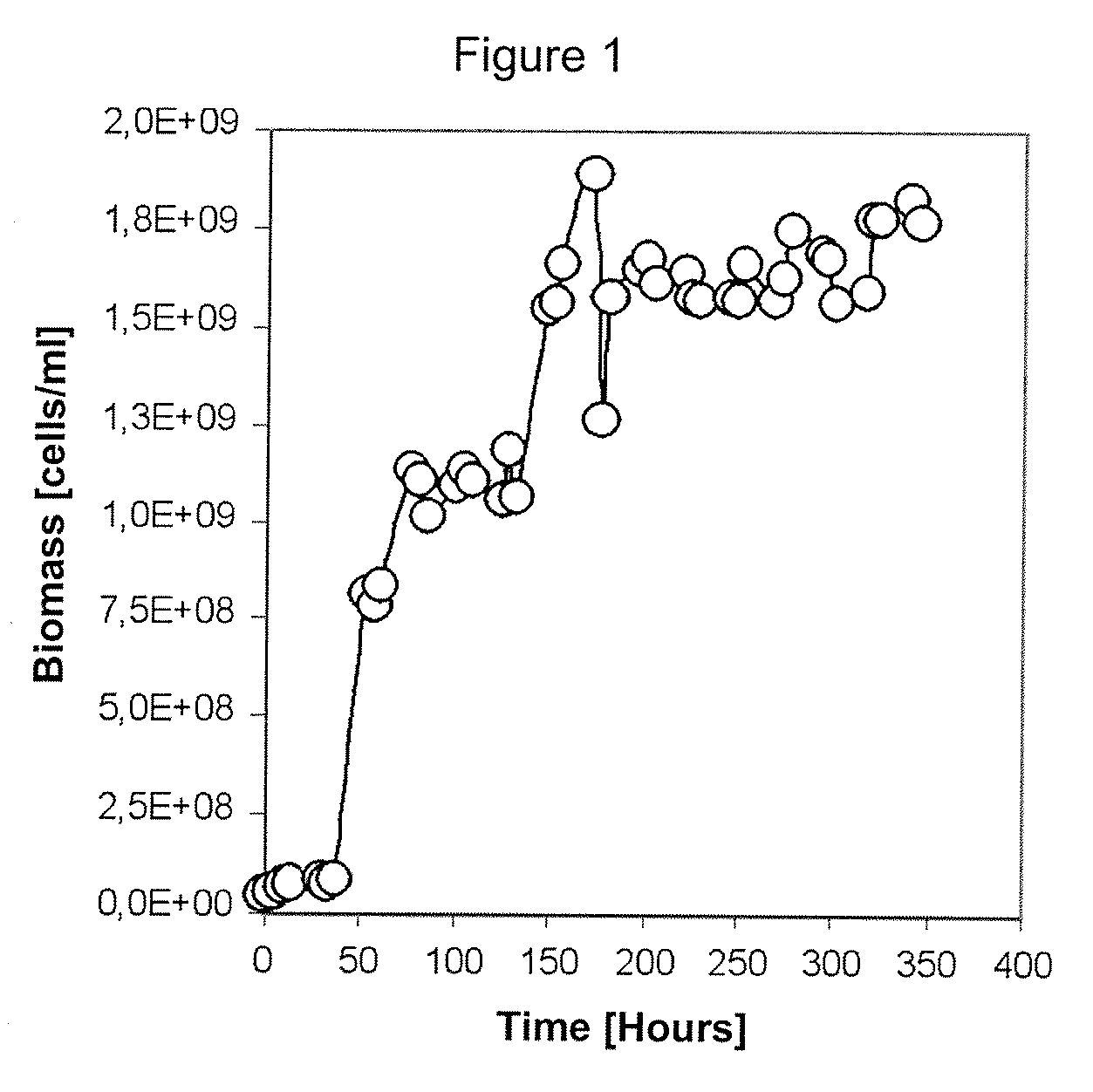Use of mining waste and concentrates containing pyrite, in the culture of iron-oxidizing and sulfur-oxidizing microorganisms as an energy source for bacterial growth
a technology of pyrite and concentrates, which is applied in the direction of fermentation, biological water/sewage treatment, water/sludge/sewage treatment, etc., can solve the problems of increasing potential contamination sources, reducing the cost of the medium, and becoming impractical
- Summary
- Abstract
- Description
- Claims
- Application Information
AI Technical Summary
Benefits of technology
Problems solved by technology
Method used
Image
Examples
example 1
[0047]In order to determine the growth kinetics and biomass yield of the association of Wenelen DSM 16786 and Licanantay DSM 17318 microorganisms, using medium modified by the incorporation of scavenger tail, an experiment is carried out using the following protocol:
Protocol
[0048]Bacterial growth took place in a 6 m3 useful volume reactor.
[0049]The culture medium used to propagate the microorganisms was prepared by suspending scavenger tail (at a 1.25% pulp density) in a nutrient solution composed as follows: 75 g FeSO4 / L, 0.99 g (NH4)2SO4 / L, 0.128 g NaH2PO4.H2O / L, 0.0525 g KH2PO4 / L, 0.1 g MgSO4.7H2O / L, 0.021 g CaCl2 / L. The pH of the cultivation medium was adjusted to 1.8.
[0050]To start the culture, 5,400 L of cultivation medium were mixed with 600 L of bacterial inoculum carrying Wenelen DSM 16786 and Licanantay DSM 17318 microorganisms.
[0051]To enable growth of the microorganisms in the reactor, air enriched with 0.5% of CO2 was supplied. The temperature of the reactor was control...
example 2
[0054]In order to prove that the association of Wenelen DSM 16786 and Licanantay DSM 17318 microorganisms can effectively be propagated continuously using a medium modified by the incorporation of scavenger tail, an experiment is carried out using the following protocol.
Protocol
[0055]Bacterial growth took place in a 50 m3 industrial reactor.
[0056]The culture medium used in the propagation of the microorganisms was prepared suspending scavenger tail (at a 0.125% slurry density) in a nutrient solution composed as follows: 8 g FeSO4 / L, 0.99 g (NH4)2SO4 / L, 0.128 g NaH2PO4.H2O / L, 0.0525 g KH2PO4 / L, 0.1 g MgSO4.7H2O / L, 0.021 g CaCl2 / L. The pH of the cultivation medium was adjusted to 1.8.
[0057]To start the culture, 44 m3 of culture medium were mixed with 6 m3 of bacterial inoculum, carrying Wenelen DSM 16786 and Licanantay DSM 17318 microorganisms.
[0058]To allow the growth of the microorganisms in the reactor, air enriched with 0.5% of CO2 was supplied. The temperature of the reactor was ...
PUM
| Property | Measurement | Unit |
|---|---|---|
| energy | aaaaa | aaaaa |
| concentration | aaaaa | aaaaa |
| pH | aaaaa | aaaaa |
Abstract
Description
Claims
Application Information
 Login to View More
Login to View More - R&D
- Intellectual Property
- Life Sciences
- Materials
- Tech Scout
- Unparalleled Data Quality
- Higher Quality Content
- 60% Fewer Hallucinations
Browse by: Latest US Patents, China's latest patents, Technical Efficacy Thesaurus, Application Domain, Technology Topic, Popular Technical Reports.
© 2025 PatSnap. All rights reserved.Legal|Privacy policy|Modern Slavery Act Transparency Statement|Sitemap|About US| Contact US: help@patsnap.com



